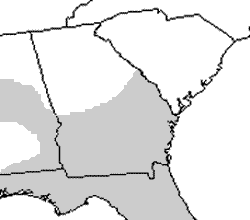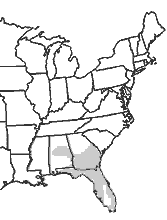Mole Skink (Plestiodon egregius)


Photos by J.D. Willson unless otherwise noted
Description: 3.5 – 6 in (9 – 15 cm). Mole skinks are small, slender lizards with long tails and short legs. They range from grayish to brown in background color with two light stripes running along each side of their body and a red or orange tail that does not fade with age. This is the only lizard in our region with a red tail and this character easily distinguishes them from the similar ground skink.
Range and Habitat: Mole skinks range throughout southern and eastern Georgia but have yet to be recorded in South Carolina. True to their name, these lizards are adept at burrowing and prefer areas of loose sandy soil. They generally prefer hotter and drier habitats than the similar ground skink and are often found beneath leaf litter, logs, boards, and other cover objects. Mole skinks are perhaps most common in sandy scrub and coastal dune habitats and often inhabit offshore islands.
Habits: Unlike many other lizards in our region, mole skinks virtually never climb. Rather than running on their tiny legs, mole skinks use their slender bodies to wriggle or “swim” through sand or loose soil, often disappearing in a flash as soon as they are discovered. Like other lizards, mole skinks will break off their tail to confuse a potential predator. Mole skinks are so secretive that much remains to be learned about their habits and behavior.
Prey: Mole skinks prey on tiny insects, spiders, and other invertebrates. In many coastal areas, they feed heavily on seaside arthropods.
Reproduction: Little is known about mole skink reproduction, except that females lay clutches of several eggs in moist soil or rotten logs during the summer and attend the eggs until they hatch.
Abundance: Mole skinks can be common in some areas but are generally patchily distributed and seldom seen. Much remains to be learned about the distribution and abundance of this secretive species.
